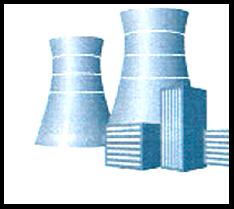The
Last Mixing Angle
 In measuring neutrinos coming from both the atmosphere and the sun, we
have learned that neutrinos do possess mass and "oscillate" amongst
each other. The mass splitings between different neutrinos, as
well as the mixing parameters, are now being measured with increasing
precision. One of these parameters --theta13, however, remains to
be measured. If this mixing angle is not too small, it may help
explain why the universe appears to be made mostly of matter rather
than anti-matter.
In measuring neutrinos coming from both the atmosphere and the sun, we
have learned that neutrinos do possess mass and "oscillate" amongst
each other. The mass splitings between different neutrinos, as
well as the mixing parameters, are now being measured with increasing
precision. One of these parameters --theta13, however, remains to
be measured. If this mixing angle is not too small, it may help
explain why the universe appears to be made mostly of matter rather
than anti-matter.So far, the best limits on this mixing angle come from experiments studying neutrinos produced in nuclear reactors. The next generation of such experiments is now being developed, with efforts taking place around the globe. The basic scheme is to use two 50 ton detectors filled with liquid scintillator to study the anti-neutrino reaction on hydrogen. The process produces a neutron, which is later captured. This very technique was how neutrinos were first discovered.
Current efforts hope to push the limit on theta13 by about one order of magnitude better than previous measurements.
Topics:
Documents & Papers of Interest:
The
White Paper (A proposal for measuring Theta13
with Reactors)
Paper on the Chooz Measurement
Three Neutrino Mixing (Maltoni Paper)
Reactor and Long Baseline Complimentarity
Notes on Backgrounds
Paper on the Chooz Measurement
Three Neutrino Mixing (Maltoni Paper)
Reactor and Long Baseline Complimentarity
Notes on Backgrounds
Proposed Sites:
Theta13
Midwest Reactor Group (U.S.)
Diablo Caynon (U.S.)
Daya Bay (China)
Angra Reactor (Brazil)
Double-CHOOZ Project (France)
KR2DET (Russia)
KASKA (Japan)
Diablo Caynon (U.S.)
Daya Bay (China)
Angra Reactor (Brazil)
Double-CHOOZ Project (France)
KR2DET (Russia)
KASKA (Japan)